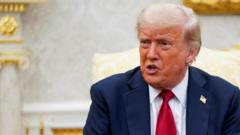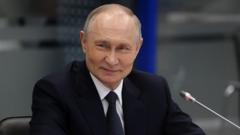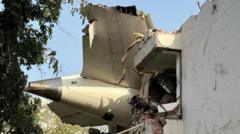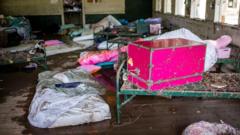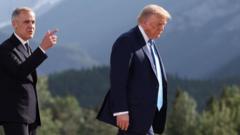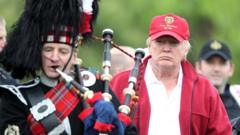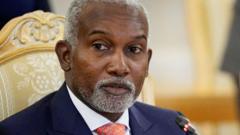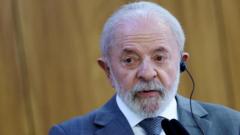With Qatar's generous $400 million offer for a new presidential aircraft, the future of Air Force One is ripe for transformation. However, the process of retrofitting the plane to meet security and operational standards poses unique challenges that could delay its deployment, raising questions about the balance between luxury and function in presidential travel.
Transforming Air Force One: The Implications of Qatar's Lavish Offer
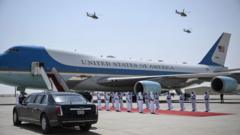
Transforming Air Force One: The Implications of Qatar's Lavish Offer
As discussions heat up regarding Qatar's proposal to gift a new Air Force One to President Trump, the complexities and significance of retrofitting and redesigning the iconic presidential jet come to light.
As Air Force One marks its legacy, it faces a potential transformation due to an enticing offer from Qatar for a state-of-the-art 747-8 jet, valued at $400 million. This proposal has sparked discussions not only about the extravagance of accepting such a gift but also the operational hurdles involved in adapting the aircraft for presidential use.
Currently, Air Force One is a Boeing 747-200b, known for its signature paint job, originally chosen by First Lady Jackie Kennedy. The aircraft has been in service since 1990, and despite upgrades, operating costs are rising. President Trump has expressed frustration over the outdated nature of the airline as he laments about traveling on a “42-year-old Boeing,” his comments highlighting a desire for modernization.
The Qatari jet, marketed as a “palace in the sky,” could offer a fresh start for the presidential jet, but it comes with a slew of logistical challenges. Technicians would need to reconfigure the aircraft to include in-flight refueling capabilities and a secure communications system—complex modifications that could take years and cost upwards of $1 billion.
Despite the gift's allure, critics have raised ethical questions surrounding such a substantial foreign offering. Additionally, incorporating security systems that can withstand extreme threats remains a top priority. Experts note that any redesign could strip the aircraft of some of its luxurious amenities in favor of functionality; it is primarily a mobile command center, after all.
The legacy of Air Force One is woven into the fabric of American history, transporting leaders like Bill Clinton and George W. Bush during pivotal moments in time. Its retirements will undoubtedly affect the narrative of presidential travel; however, Trump's active preference for using the aircraft as a campaign tool further complicates the discussion around its future.
As Air Force One continues its storied journey, the impending rejuvenation symbolizes more than just a new coat of paint or plush seating—it's a reflection of American resilience, authority, and the quest for a sustainable, secure future in presidential air travel. Whether Trump decides to accept Qatar's offer or push for a homegrown upgrade, the wings of change may soon envelop one of the world's most recognizable symbols of power.






